Index

Review: Reference design, higher clocks
Our guest today is EVGA’s Geforce GTX 570 Superclocked, which as the name suggests comes overclocked. The card’s GPU runs at 797MHz and the memory at 3900MHz. Naturally, higher clocks mean more juice for gaming, and who would say no to that?
Geforce GTX 570 is the second in line Geforce GTX 500 series card. They are currently the best Nvidia can offer and since Nvidia partners got a nod from Nvidia for overclocking, you can find plenty of juiced up GTX 570 cards on the market. Truth be told EVGA GTX 570 is not the fastest of them all, but a 65MHz overclock definitely counts it among the fastest.
EVGA GeForce GTX 570 Superclocked specification:
Part Number 012-P3-1572
Core Clock Speed 797MHz
Processing Cores 480
Memory Clock Speed 3900MHz
Memory Bandwidth 156GB/sec
Shader Clock Speed 1594MHz
Bus PCI-E 2.0
Interface DVI-I, DVI-I, Mini-HDMI
Product Warranty 10 years upon registration
As you can see, EVGA offers a 10 year warranty after the registration, but it would be wise to check whether it applies for your region.
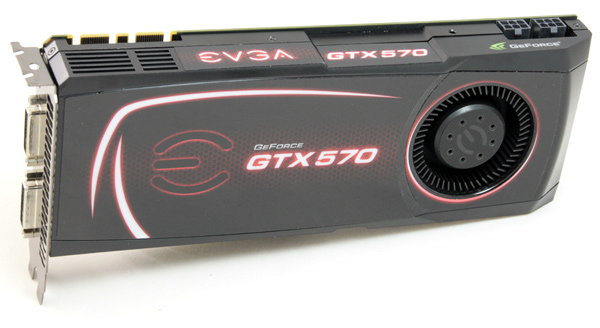
EVGA stuck to reference cooling for their card. Note that EVGA's GeForce GTX 570 Superclocked requires two slots in your system.
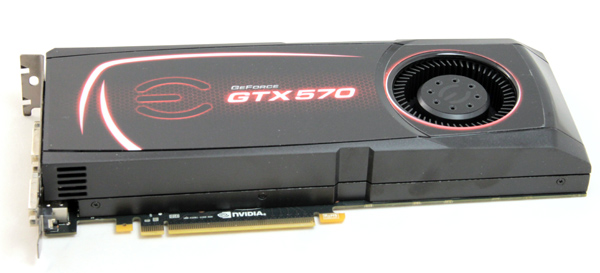
Except for the sticker and clocks of course, GTX 570 Superclocked is no different than the reference. The following photo shows reference GTX 570 and GTX 580 cards. The differences in cooling are only evident when you take the cooling apart.
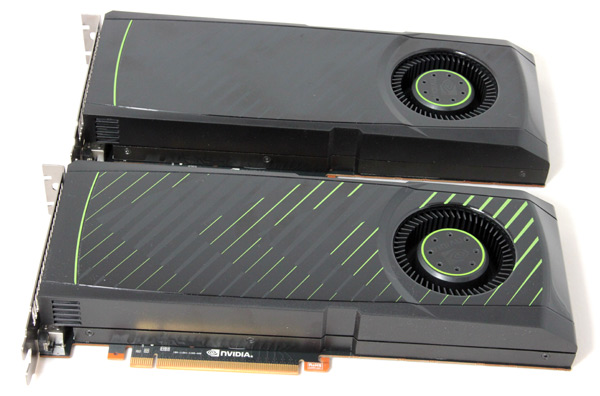
The following photo shows GTX 580’s and GTX 570’s cooler. GTX 580 is the upright one.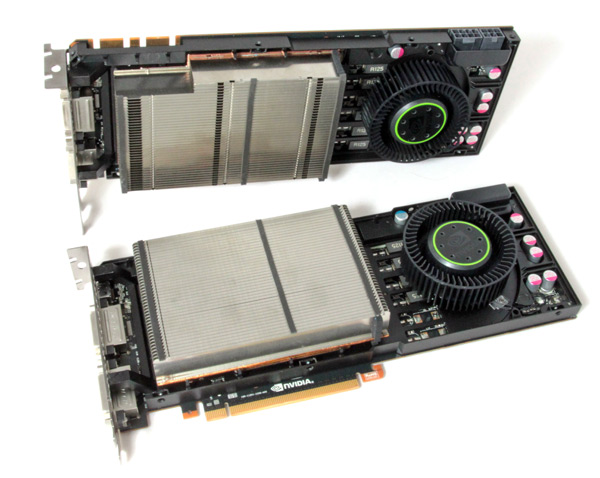
With help from the vapor chamber technology, the GTX 570’s cooler is really quiet. Unlike the long heatpipes which transfer heat from the copper base to aluminum fins, Vapor-X chamber is a component that brings both copper-base and heatpipe functions together. The advantage is in direct contact with the GPU and a large surface of only a few millimeters thick Vapor-X chamber, which comes in place of the copper base. It then directly receives and transfers heat to the aluminum fins, maximizing heat transfer between the GPU and the rest of the heatsink.
When it comes to performance and thermals, reference dual slot cooling on the GTX 580 / GTX 570 ended up being much better compared to the GTX 480’s.
The plastic hood covers the entire card and all that’s visible is the blower-style fan, which exhausts hot air out the back of the system chassis.
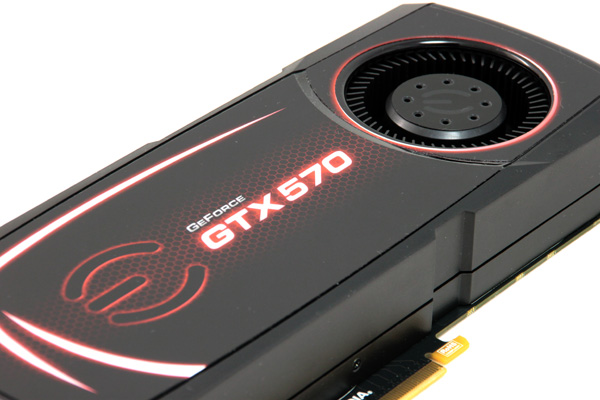
Geforce GTX 580 and Geforce GTX 570 feature a new adaptive GPU fan control algorithm that smoothes the ramp up/down of the fan speed under load.
Nvidia added Advanced Power Management, a feature which monitors consumption and performs power capping – all to protect the graphics cards from excessive power draw and potential damage. It appears that this method is fast becoming a trend as AMD implemented a similar tech on its HD 6900 series.
When the sensors detect higher than allowed consumption (on all three 12V rails, i.e. PCI-E slot, 6-pin and 8-pin connectors), GTX 570 automatically downclocks and reverts to original clocks when the overcurrent is over.
HD 6900 series allows for monitoring of clock changes in GPUZ, but in the case of GTX 580/GTX 570 it is not so simple. Good thing about both HD 6900 series and GTX 570 is that they can enter several low-frequency states, whereas the GTX 580 can only downclock by 50%.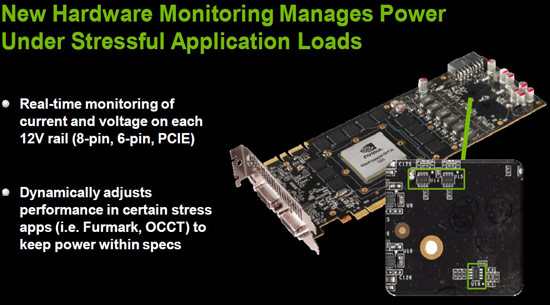
GTX 580/570 is the same size as Geforce GTX 480, measuring 10.5 inches or 26.7 centimeters in length. GTX 570 has two 6-pin power connectors maximum graphics card power 219W (for reference card) compared to GTX 580 which has one 6-pin and 8-pin power connector and maximum graphics card power 244W.
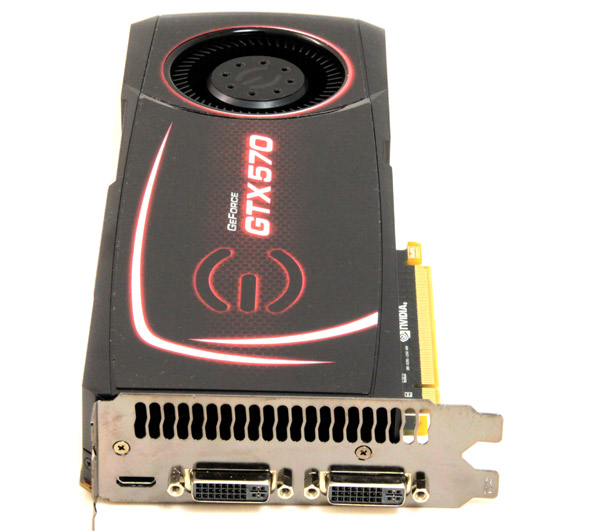
The video engine didn’t change; it is the same as on GF100, Fermi chips. You still have maximum of two display supported, no DisplayPort, at least not on reference boards (According to NVIDIA the card also supports DisplayPort if board partners want to use it.). The Superclocked card has two dual-link DVI ports and one mini HDMI interface is HDMI 1.3a compatible. The mini HDMI cable might be bundled by partners and if not it will cost you much more than a standard full size HDMI that you use for your HD TV. EVGA included a mini HDMI to HDMI adapter cable.
Nvidia included an HDMI sound device within the GPU, so there is no need for connecting the card to your motherboard’s/soundcard’s SPDIF out to get audio and video via HDMI.
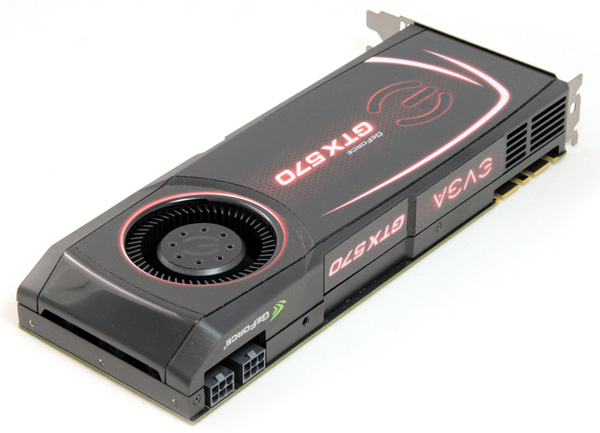
GTX 570 comes with two SLI connectors. This means you can combine up to four GTX 570 cards in SLI mode for improved performance or image quality settings.
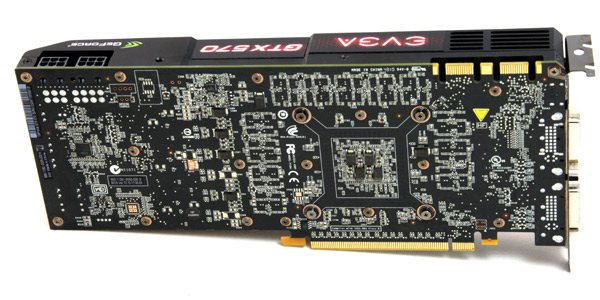
The EVGA GeForce GTX 570 Superclocked uses 1280 MB video memory. The chips used are K4G10325FE-HC05 parts from Samsung.
Packaging
You’ll find a mini-HDMI-to-HDMI adapter in the box, as well as the large EVGA poster.
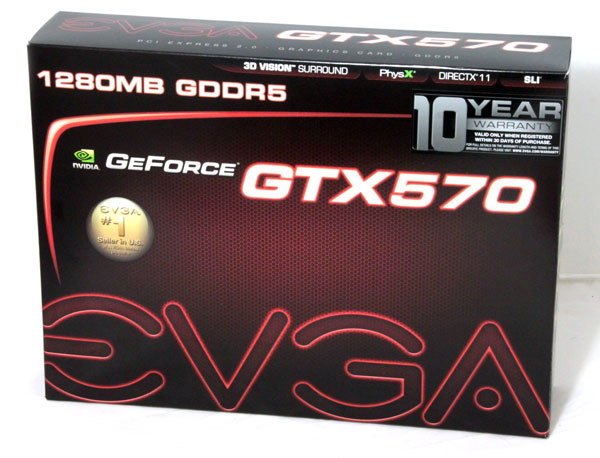
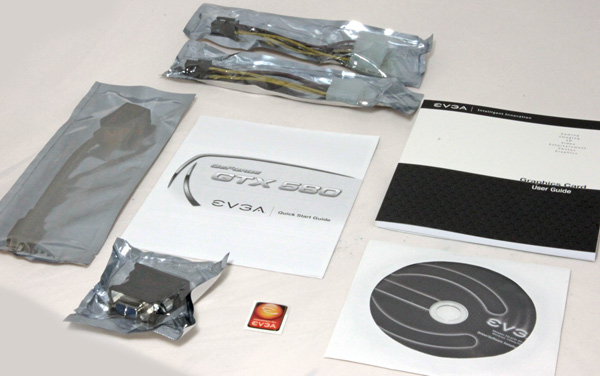
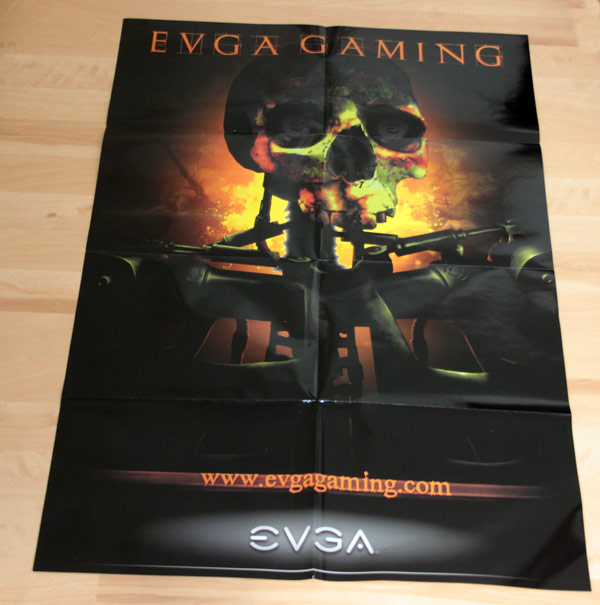
Testbed
Motherboard: EVGA 4xSLI
CPU: Core i7 965 XE (Intel EIST and Vdrop enabled)
Memory: 6GB Corsair Dominator 12800 7-7-7-24
Harddisk: OCZ Vertex 2 100 GB
Power Supply: CoolerMaster Silent Pro Gold 800W
Case: CoolerMaster HAF X
Fan Controler: Kaze Master Pro 5.25"
Operating System: Win7 64-bit
263.09_desktop_win7_winvista_64bit
10.12 CCC
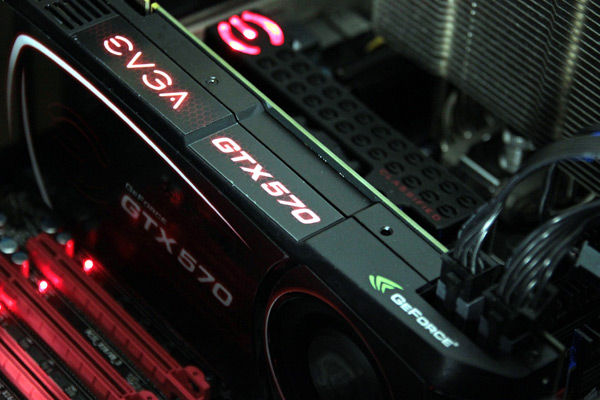
3DMark 2011
3DMark 11 is the latest version of the popular benchmark for measuring the 3D graphics performance of gaming PCs. 3DMark 11 uses a native DirectX 11 engine which makes extensive use of all the new features in DirectX 11 including tessellation, compute shaders and multi-threading.
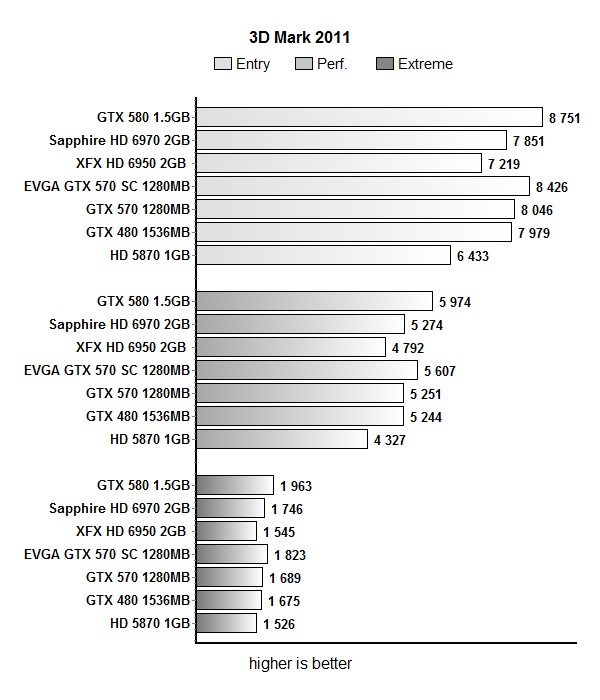
3DMark Vantage
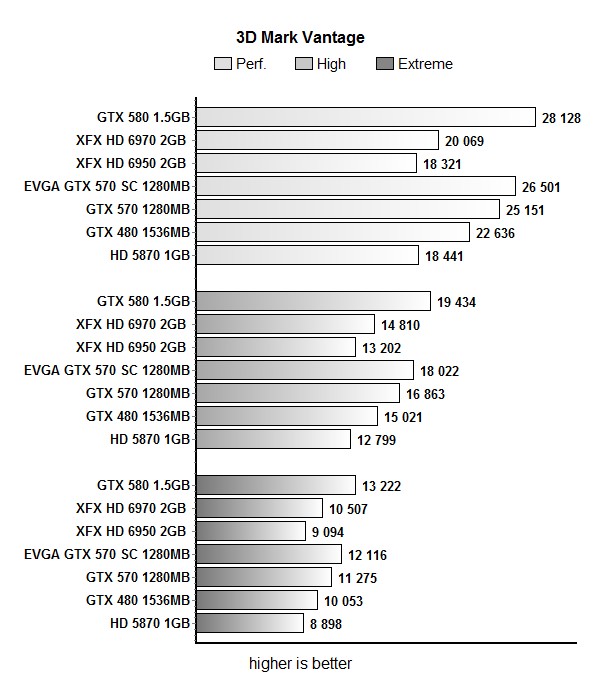
Aliens vs Predator
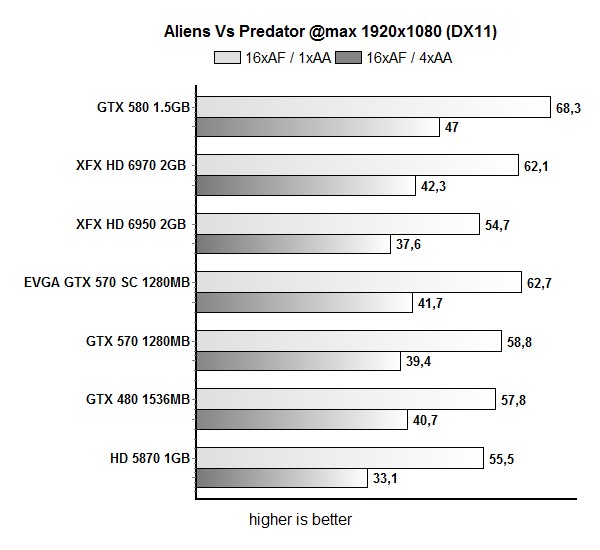
Dirt2
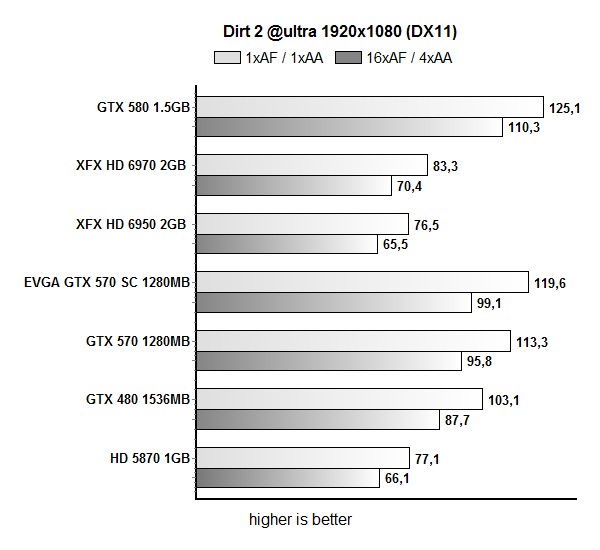
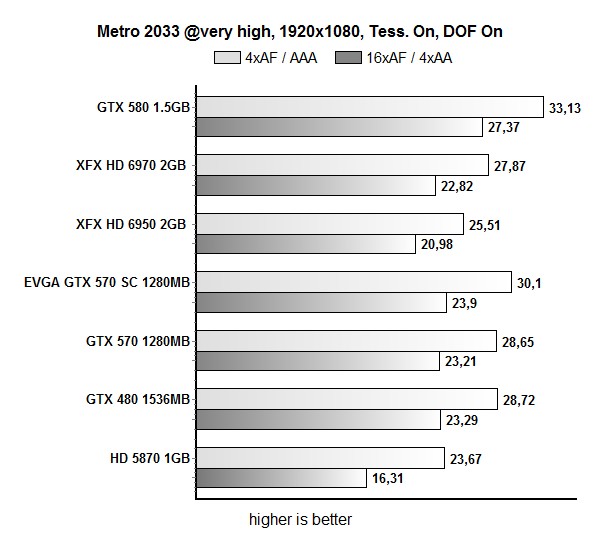
Unigine Heaven

TessMark
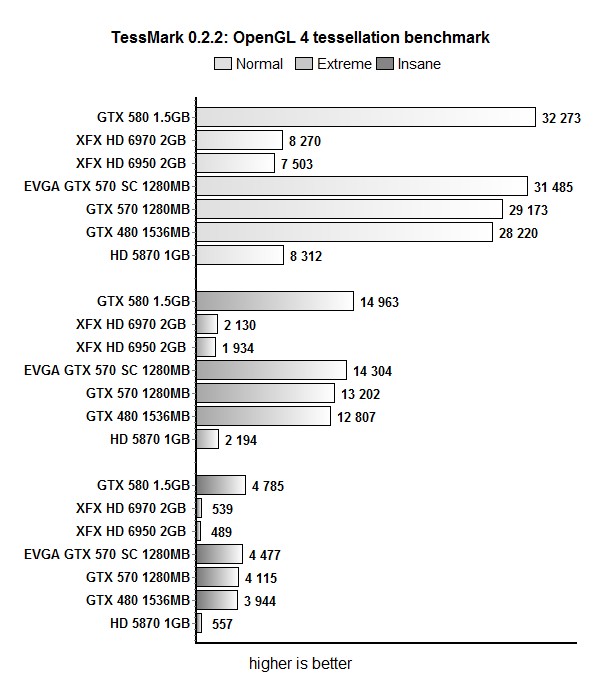
Overclocking
As its name suggests, EVGA GTX 570 Super Clocked is a factory overclocked graphics card. Its GPU runs at 797MHz and the memory at 975MHz. Just to remind you, Nvidia’s reference clocks for this card are 732MHz for the GPU and 950MHz for the memory.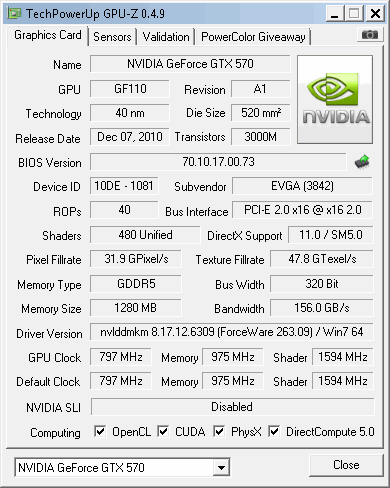
A 65MHz GPU overclock is a respectable one and will surely bring about visible performance increase. However, any additional overclocking on our card was limited by the core’s voltage.
MSI Afterburner 2.1.0 Beta 5 reports that the card’s default voltage is 988mV, which limited us to 810MHz for the GPU.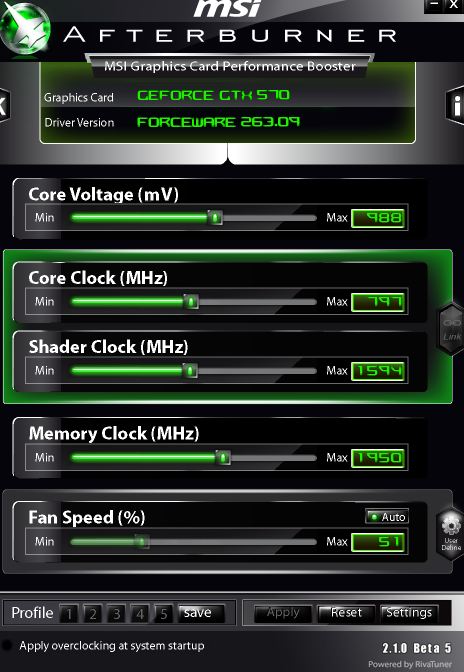
We pushed the core voltage to 1088mV and achieved stable 870MHz, which was the maximum we managed. Note that Afterburner 2.1.0 Beta 5’s maximum voltage is 1100mV, but further voltage increases didn’t do much to improve our overclocking results. We managed to push the memory to 1110MHz (4440MHz effectively).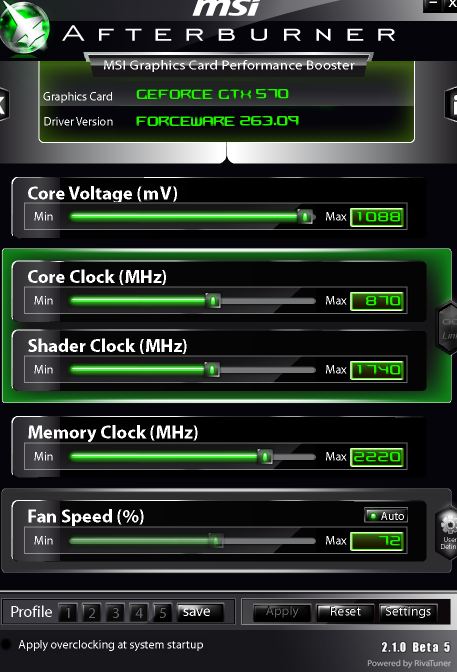
Thermals and Noise
As far as noise levels go, the GTX 570 SC’s cooler is almost inaudible when idle, with GPU temperature around 45°C. While the GTX 570 SC isn’t too loud during operation, it was the loudest piece of equipment in our rig. In our case, intensive 3D resulted in GPU temperature of about 86°C.
Conclusion
End of 2010 saw the launch of Radeon HD 6970 and Geforce GTX 570 graphics cards, which have proven to be great and definitely serve as a nice reference points for graphics performance. As far HD 6970 and GTX 570 go, they come with pretty much identical performance and pricing. An example of this is EVGA GTX 570 whose clocks are up from 732MHz to 797MHz for the GPU and the memory from 950MHz to 975MHz.
Higher clocks mean improved performance, which is the GTX 570 Superclocked’s main advantage as the card uses reference cooling. Thankfully, Nvidia did a good job by using vapor chamber technology on reference coolers. Despite the overclock, the cooler is not to loud and the temperatures aren’t too high either.
If you’re looking for extra performance, EVGA GTX 570 Superclocked can definitely satisfy your urge. On the other hand, there’s also the option of purchasing EVGA GTX 570 at reference clocks for some €30 less. EVGA GTX 570 Superclocked is currently priced at around €342. You can find both cards listed here.



